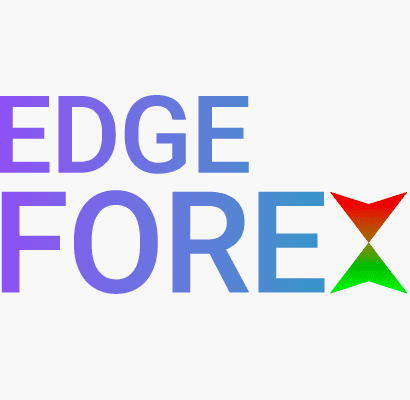When crude explodes higher, most retail traders rush to gold or jump straight into USD trades. The pros? They glance at one forgotten spread first — silver vs oil.
Picture 2022 again. Brent shoots past $120. Social media screams “supercycle.” Emerging market traders panic as currencies wobble. Yet in the middle of the chaos, something interesting happens. Silver stalls early, then rips weeks later while energy cools.
I remember watching this trade play out: oil bulls got euphoric, EMFX desks hedged frantically, silver sat quietly — and then flipped the script. That spread told the truth earlier than the headlines.
This isn’t theory. Inflation cycles and oil spikes often trigger a two-phase play:
- Oil surges on supply/geopolitics
- Silver catches fire once sticky inflation becomes obvious
The puzzle traders ask: who wins first, who wins bigger, and how does INR react? That’s where it gets spicy.
Why Silver vs Oil Matters in Real Macro Storms?
Oil shocks don’t just raise pump prices. They shake liquidity, policy outlooks, and EMFX nerves.
Oil spike impact path:
- Energy importers panic
- Inflation expectations rise
- Central banks shift tone
- Risk assets wobble
- Safe-haven and real asset bids appear
Silver reacts more slowly than gold early in shock phases, but it shines when inflation sticks rather than spikes.
Oil’s move = supply/geopolitical first.
Silver’s move = inflation + monetary + industrial demand later.
This is why chasing crude after headlines rarely wins. Smart traders look for divergences between the two.
And yes, this spread gives a subtle read on markets like India, where every oil uptick pokes INR sentiment like a sharp stick.
Real trader energy: The Spread tells you Stress Better than Twitter does
A trick many macro desks use:
When crude breaks higher without silver participation, it often signals:
- temporary supply shock
- no broad inflation panic
- EMFX weakness ahead
When will silver catch up fast after oil?
- market pricing sticky inflation
- Retail hedging behavior is rising
- global macro desks reallocating into metals
This is where professional traders take notice. Retail rarely sees it early.
Small data snapshot — oil leads, silver follows
| Event | Oil reaction | Silver reaction | Market mode |
|---|---|---|---|
| Russia-Ukraine | Exploded | Lagged then spiked | Inflation panic + EM stress |
| 2014 oil crash | Collapsed | Slid slower | Deflation scare |
| Covid reflation | Ripped | Outperformed months later | Liquidity + industrial demand |
Pattern? Oil shocks ignite fear. Silver thrives when inflation proves sticky.
India angle: Why this spread whispers INR moves
India imports ~85% of its oil. That alone makes crude spikes a currency story, not just an energy one.
When crude rallies sharply:
• fuel inflation rises
• RBI stress increases
• traders hedge INR aggressively
• markets price delayed rate cuts
• silver demand in emerging markets often stays resilient
Silver doesn’t perfectly hedge INR weakness during oil surges, but it often signals when inflation pressure is real — not just geopolitical noise.
INSIGHT:
If oil rises but silver stays cold, INR stress likely builds.
If silver heats up, the inflation impulse is real — and INR pain isn’t done yet.
Trading logic: When to favor silver vs oil
Use this simplification:
Oil leads in:
- supply shocks
- war risk
- OPEC cuts
- shipping disruptions
Silver outperforms in:
- sticky inflation phases
- monetary stress
- EM retail hedge demand surges
- precious metal accumulation cycles
Quick trader logic checklist:
Crude ripped fast, silver lagging?
Oil likely front-run. Hedge for silver catch-up.
Silver rising with oil cooling?
Market pricing lasting inflation. EMFX still shaky.
Both ripping?
Systemic inflation wave. Look at real rates, Fed tone.
Both falling?
Demand slowdown risk. Watch PMIs and bond market signal.
This mindset beats “oil up means buy oil.”
Case study: Energy shock meets EMFX
Think of 2022 again. Oil hit $120+.
USDINR spiked toward all-time highs.
Gold rallied first, and silver later exploded faster.
Classic EM panic structure:
- Crude jumps → INR weakens
- Fed hawkish → USD strong
- Inflation sticky → silver ramps hard
That spread told you the second wave of stress before most media headlines.
Chart logic explanation (if plotting later)
A simple way pros look at it:
Silver/Oil ratio rising
→ inflation regime + EM strain, INR sensitivity increasing
Silver/Oil ratio falling
→ supply shock, short-term energy squeeze, INR fragility phase
You don’t need fancy indicators. Just ratio movement + macro context.
Where traders mess up?
They think:
“Oil up = inflation hedge = buy metals now.”
Reality:
Crude spikes first on fear. Precious metals move later when inflation sticks.
Another common mistake:
Treating silver like gold.
Silver trades more like “monetary metal + manufacturing stress barometer.”
You trade it for a macroeconomic regime — not a religion.
Live scenario thought experiment
Assume crude hits $110 on OPEC surprise cuts.
What to monitor:
- DXY direction
- fiscal headlines from India
- RBI comments
- EMFX basket stress (TRY, ZAR, IDR)
- Treasury yields
Silver lagging? Spread widening?
EMFX weakness incoming, INR especially.
Silver rising alongside crude?
Policy stress, possible rate delay, sticky inflation.
This isn’t correlation trading. It’s regime reading.
Click here to read our latest article Global GDP Growth 2025: Why the World Economy Is Slowing?
I’m Kashish Murarka, and I write to make sense of the markets, from forex and precious metals to the macro shifts that drive them. Here, I break down complex movements into clear, focused insights that help readers stay ahead, not just informed.
This post is originally published on EDGE-FOREX.





